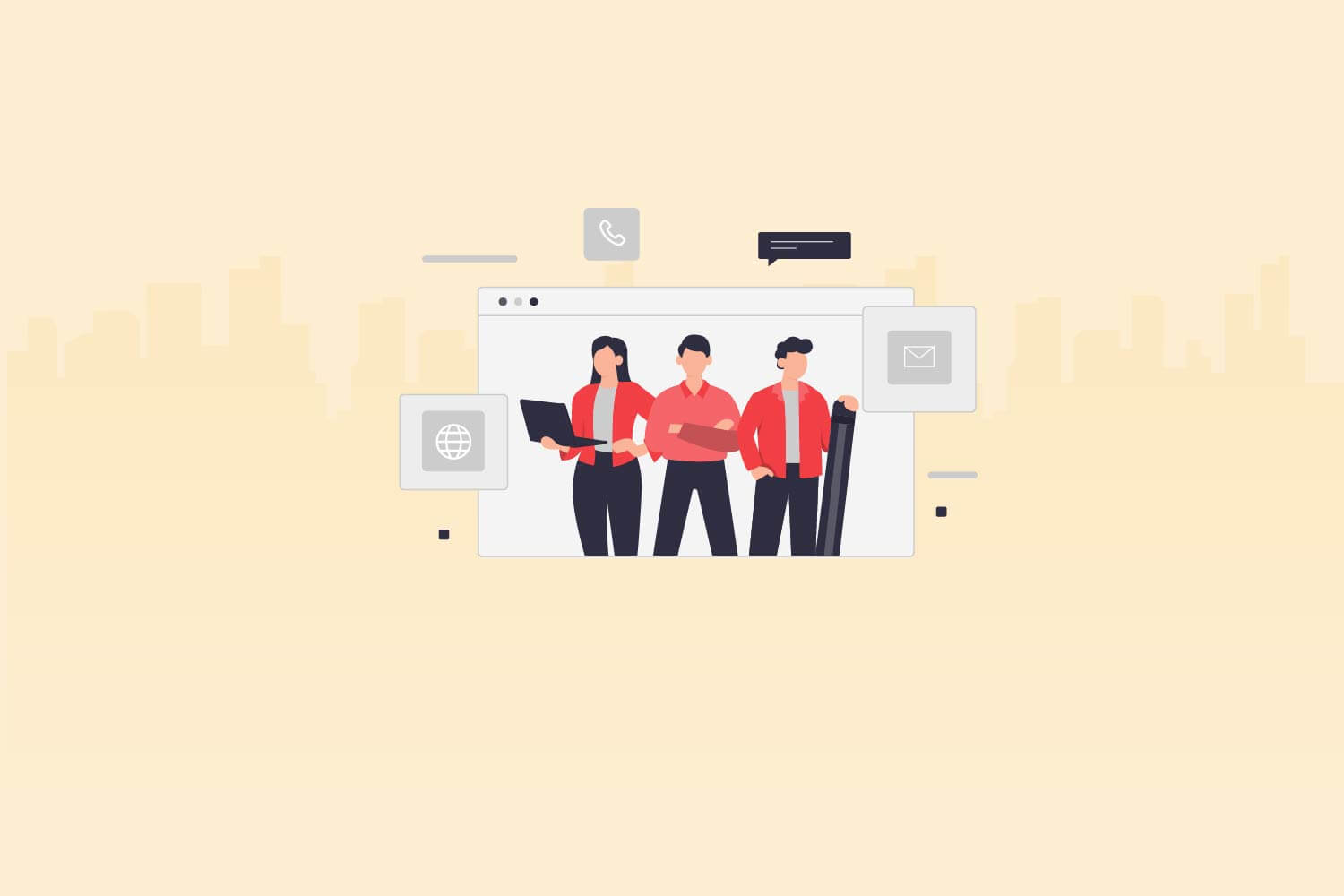In the fast-paced world of recruitment, the traditional in-person interview is no longer the only option for assessing candidates. With advancements in technology and the increasing use of remote work, video and audio interviews have become popular tools for evaluating potential hires. While these digital interviews offer numerous benefits, they also come with their fair share of challenges.
HR Dive‘s 2021 survey revealed that technical issues are a major challenge, with 38% of recruiters citing them when using video and audio interviews in assessments.
In this long-form blog, we will delve into the world of video and audio interviews and explore the various obstacles recruiters face when using them as assessment tools.
Introduction to video and audio interview
Recruiters today are tasked with the challenge of finding the best talent from a global pool of candidates. Video and audio interviews have emerged as valuable tools in this quest, offering benefits like increased efficiency, reduced costs, and broader access to talent. However, they also introduce a unique set of challenges that must be navigated skillfully to ensure fair and effective assessment processes.
The rise of video and audio interviews
Before we dive into the challenges, let’s first understand the reasons behind the widespread adoption of video and audio interviews in the recruitment process.
Remote work trend
The advent of the digital era has transformed the landscape of work, ushering in the era of remote employment. As remote work gains momentum, so too does the utilization of video and audio interviews in the recruitment process. This trend has arisen from the fundamental shift in how businesses and individuals approach work, no longer tethered to the traditional office space.
Remote work facilitates the hiring of talent from virtually anywhere in the world, breaking down geographical barriers that once restricted recruitment efforts. Companies can now cast their net wider, seeking candidates who possess the skills and expertise they need, regardless of their physical location.
The convenience and flexibility offered by remote work are mirrored in the adoption of digital interviews. Both candidates and organizations benefit from this approach, as there’s no longer a requirement for individuals to be present at the same physical location for an interview. This means that the recruitment process can proceed smoothly without the logistical constraints and expenses associated with travel.
Time and cost efficiency
Efficiency is the cornerstone of success in the modern world, and the adoption of video and audio interviews is no exception. One of the primary drivers behind this trend is the substantial time and cost savings it affords both recruiters and candidates.
In traditional in-person interviews, candidates often need to allocate considerable time for travel, which can entail long commutes or even overnight stays in unfamiliar cities. These demands place a burden on both the interviewee and the hiring organization. However, with digital interviews, such concerns become relics of the past.
Candidates no longer need to endure the hassles of traveling to a physical location for an interview. Instead, they can participate in the assessment process from the comfort of their own surroundings. This not only saves candidates time but also reduces their financial burden, eliminating expenses related to transportation, accommodation, and dining.
Broader candidate Pool
In the contemporary job market, competition for top talent is fierce, and organizations are continually seeking ways to gain a competitive edge. The adoption of video and audio interviews is a strategic move that opens the doors to a broader and more diverse talent pool.
Traditionally, hiring efforts were largely confined to a specific geographic region due to the necessity of in-person interviews. However, digital interviews eliminate this constraint. Recruiters can now connect with candidates from different regions, states, and even countries.
This expansion of the candidate pool brings with it the potential for greater diversity within organizations. Companies can tap into the talents of individuals from various cultural backgrounds, skill sets, and experiences. The result is a workforce that reflects a wider range of perspectives and ideas, which can lead to innovation and growth.
The challenges
While video and audio interviews offer several advantages, they also pose specific challenges that recruiters must address. These challenges can impact the quality of the assessment and the overall candidate experience.
Technical glitches
Internet connectivity
One of the foremost challenges plaguing digital interviews is the reliability of internet connections. In an era where connectivity has become an indispensable part of daily life, interruptions in the form of dropped calls or erratic audio and video quality can wreak havoc on the interview process. Imagine a scenario where a candidate is in the middle of a crucial response, and suddenly their voice and image become distorted due to a lagging connection. Such disruptions not only hinder the flow of communication but also impair the candidate’s ability to express themselves effectively.
Software compatibility
Recruiters and candidates often find themselves navigating a labyrinth of different video conferencing platforms. This diversity can lead to a compatibility quagmire, causing delays, confusion, and frustration for both parties. Imagine the potential for miscommunication when a candidate expects one platform, while the recruiter opts for another. Such incompatibility can lead to wasted time, technical hiccups, and an overall less-than-ideal candidate experience.
Bias and fairness
Unconscious bias
While digital interviews offer convenience and efficiency, they also introduce a subtle but significant challenge—unconscious bias. The visual aspect of video interviews opens the door to judgments based on appearance, background, or even mannerisms. Recruiters, despite their best intentions, may inadvertently favor candidates who share similarities with themselves or fit certain preconceived notions. This unconscious bias can undermine the integrity of the assessment process, potentially leading to missed opportunities for exceptional candidates who don’t conform to expected stereotypes.
Lack of standardization
Ensuring fairness in the assessment process is more complex in the digital realm. Unlike traditional, standardized in-person interviews, the digital landscape may lack consistency. Variations in interview structures, questions, and evaluation criteria can introduce inequalities in candidate assessments. These inconsistencies can compromise the validity of comparisons between candidates, making it challenging to identify the most qualified individuals for a role.
Limited non-verbal cues
Reduced body language
Video interviews, while convenient, come with a trade-off: reduced visibility of a candidate’s body language. Traditional in-person interviews allow recruiters to observe a candidate’s gestures, facial expressions, and posture, providing valuable insights into their reactions and personality. However, the limited visual scope of video interviews makes it challenging to gauge these non-verbal cues accurately. Misinterpretations or incomplete assessments may occur, potentially leading to incorrect conclusions about a candidate’s suitability for a role.
Cultural differences
The digital interview arena is a melting pot of candidates from diverse cultural backgrounds. While this diversity is a strength, it can also present challenges. Recruiters may not always be well-versed in the nuances of different cultures, leading to misunderstandings or misinterpretations of non-verbal cues. What might be considered a sign of respect in one culture might be perceived differently in another. These cultural differences can inadvertently introduce biases into the assessment process, impacting the candidate’s chances based on factors beyond their control.
Technical competence
Candidate skill
The level of technical proficiency among candidates varies widely. While some candidates are adept at navigating video conferencing software effortlessly, others may find it daunting. This discrepancy in technical competence can create disparities in the interview experience. Candidates who struggle with the technical aspects of the interview may become anxious or flustered, impacting their overall performance. It is essential for recruiters to be sensitive to these differences and provide support to ensure that a candidate’s technical limitations do not overshadow their qualifications.
Technical failures
Technical mishaps can strike at any moment, and often, they occur on the candidate’s side. Microphone malfunctions, camera glitches, or unexpected software crashes can disrupt the interview and unfairly affect a candidate’s performance. These unforeseen technical failures can lead to frustration and a sense of injustice for candidates who may have prepared diligently for the interview.
Candidate experience
Lack of personal connection
Despite their undeniable advantages, video interviews can sometimes feel impersonal. The absence of physical presence and the screen-mediated interaction can create a barrier that impedes the formation of a strong personal connection between candidates and recruiters. This detachment may, in turn, affect a candidate’s enthusiasm for the role and their affinity for the company, potentially leading to missed opportunities for valuable talent.
Interview fatigue
In today’s competitive job market, candidates often find themselves participating in multiple video interviews with different companies. This repetition can lead to interview fatigue, where candidates become weary of the process. As interview fatigue sets in, candidates may exhibit reduced enthusiasm and engagement, affecting their performance and potentially diminishing the quality of their interactions with recruiters.
Assessment tools and training
Limited assessment tools
Many recruiters may find themselves without the necessary tools and training to conduct effective video and audio interviews. The absence of user-friendly platforms and comprehensive guidance can result in suboptimal assessments that fail to accurately reflect a candidate’s abilities. Access to the right technology and resources is pivotal in ensuring a fair and effective evaluation process.
Interviewer training
The challenges associated with video and audio interviews extend beyond candidates. Recruiters themselves may not be adequately trained to navigate the intricacies of digital assessments. A lack of training can lead to inconsistent and unreliable evaluations, undermining the integrity of the hiring process. Ongoing training and upskilling are essential to equip recruiters with the knowledge and skills necessary to conduct effective video and audio interviews.
While video and audio interviews have revolutionized the recruitment landscape, they are not without their share of challenges. Addressing these challenges with proactive measures, training, and the right technology can help recruiters harness the advantages of digital interviews while mitigating their potential drawbacks. Ultimately, achieving a balance between technology and human touch is the key to successful recruitment in the digital age.
Overcoming the challenges
Despite these challenges, video and audio interviews can be a valuable addition to the recruiter’s toolkit. By addressing these obstacles proactively, recruiters can harness the benefits while minimizing the drawbacks.
Technical preparedness
Pre-interview checks
Technical hiccups can mar the smooth flow of digital interviews, causing interruptions and frustration. To circumvent these issues, proactive pre-interview checks are essential. Recruiters should engage candidates in pre-interview discussions, ensuring they are comfortable with the technology and well-acquainted with the interview platform. Confirming that candidates possess a stable internet connection is crucial. Conducting these checks not only sets the stage for a seamless interview experience but also demonstrates the organization’s commitment to candidate comfort and fairness.
Backup plans
Even with meticulous preparations, technical failures can still occur. To mitigate the impact of such disruptions, having a well-thought-out backup plan is invaluable. Recruiters should be prepared to swiftly switch to alternative communication methods, such as a phone call, if technical glitches rear their head during the interview. This contingency plan ensures that the assessment process can continue with minimal disruption, preserving the candidate’s experience and the integrity of the evaluation.
Bias mitigation
Structured interviews
To combat bias effectively, structured interviews are indispensable. Implementing a standardized set of questions and a consistent interview process helps level the playing field for all candidates. By focusing on the same set of criteria for each interviewee, recruiters can make fairer and more accurate assessments based on merit rather than subjective judgments. This approach ensures that each candidate is evaluated fairly and consistently, minimizing the potential for unconscious bias to seep into the assessment.
Blind auditions
Blind auditions represent a groundbreaking strategy to neutralize bias. By concealing a candidate’s personal information, including their name and appearance, from the interviewer, this approach eliminates preconceived notions and stereotypes. Recruiters can assess candidates purely based on their qualifications, skills, and responses, fostering a more equitable evaluation process. Blind auditions send a powerful message that an organization is committed to unbiased hiring practices and values diversity and inclusion.
Non-verbal assessment
Focus on verbal communication
With the diminished visibility of non-verbal cues in digital interviews, verbal communication skills come to the forefront. Recruiters should pay close attention to how candidates articulate their thoughts, convey their ideas, and engage in dialogue. The ability to communicate effectively through words gains heightened significance in this context. Evaluating a candidate’s verbal acumen can offer valuable insights into their ability to convey complex concepts, collaborate with colleagues, and engage with clients or customers.
Cultural sensitivity training
In a globalized world, recruiters must be attuned to cultural differences in communication styles. Misunderstandings arising from cultural nuances can be detrimental to the interview process. Providing cultural sensitivity training to recruiters equips them with the knowledge and skills to recognize and respect these differences. A culturally sensitive approach not only fosters fairness but also showcases an organization’s commitment to creating an inclusive workplace where candidates from diverse backgrounds are valued and understood.
Technical competence
Candidate support
Recruiters should extend support to candidates who may be less tech-savvy. Clear and concise instructions on how to navigate the interview platform should be provided, ensuring that candidates can participate with confidence. This support includes guidance on camera and microphone usage, screen sharing, and troubleshooting common technical issues. Empowering candidates with the necessary technical know-how helps level the playing field and ensures that their true abilities shine through in the assessment.
Technical assistance
Technical failures on the candidate’s end can disrupt the interview and impact their performance unfairly. To prevent such setbacks, having technical assistance readily available during interviews is essential. This support team can quickly address any candidate-side technical issues, ranging from audio and video problems to platform navigation. By providing immediate solutions to technical glitches, recruiters demonstrate their commitment to a smooth and equitable interview experience.
Candidate experience
Personalization
Despite the digital nature of interviews, personalization remains paramount. Recruiters should make intentional efforts to establish a human connection with candidates. Engaging in casual conversation at the beginning of the interview, expressing genuine interest in the candidate’s background, and creating a welcoming atmosphere can go a long way in fostering a positive candidate experience. Personalization not only makes candidates feel valued but also leaves a lasting impression of the organization as an empathetic and person-centric employer.
Communication
Keeping candidates well-informed throughout the interview process is crucial. Transparency regarding the interview timeline, expectations, and what to anticipate helps reduce anxiety and interview fatigue. Providing regular updates and timely feedback, regardless of the outcome, ensures that candidates feel respected and appreciated for their time and effort. Effective communication cultivates a positive candidate experience, leaving candidates with a favorable impression of the organization, regardless of the final decision.
Assessment tools and training
Invest in technology
Investing in cutting-edge video interview platforms is fundamental to a successful digital assessment process. User-friendly platforms that offer features such as recording, playback, and evaluation tools can significantly enhance the recruiter’s ability to conduct effective interviews. These tools streamline the assessment process, facilitate collaboration among interview panels, and provide valuable insights for informed decision-making.
Continuous training
Recruiter competence is an integral component of a successful digital interview process. Providing ongoing training and upskilling opportunities is essential to ensure that recruiters are well-prepared to navigate the nuances of video and audio interviews. Continuous training covers best practices for conducting assessments, technical proficiency, and staying updated on the latest advancements in digital interviewing. Equipped with the right knowledge and skills, recruiters can consistently deliver high-quality assessments and uphold the organization’s commitment to fair and effective recruitment practices.
Conclusion
Video and audio interviews have revolutionized the way recruiters assess candidates, offering convenience, cost savings, and access to a broader talent pool. However, they also come with a unique set of challenges, from technical glitches to bias and fairness concerns. To overcome these obstacles and make the most of digital interviews, recruiters must take a proactive approach, addressing technical preparedness, bias mitigation, non-verbal assessment, candidate experience, technical competence, and assessment tools and training.
By navigating these challenges skillfully, recruiters can unlock the full potential of video and audio interviews as powerful tools for finding the best talent in today’s competitive job market. Embracing technology while maintaining a human touch is the key to successful recruitment in the digital age.
Don’t let the challenges of video and audio interviews stifle your recruitment process. With Testlify, our state-of-the-art talent assessment tool, you can streamline, standardize, and supercharge your digital interviews. Harness the power of sophisticated assessment algorithms, user-friendly interfaces, and actionable insights to ensure every candidate gets a fair shot, and you get the best talent. Dive into the future of recruitment, where technology meets human intuition. Ready to transform your hiring process? Try Testlify today and experience the difference!








